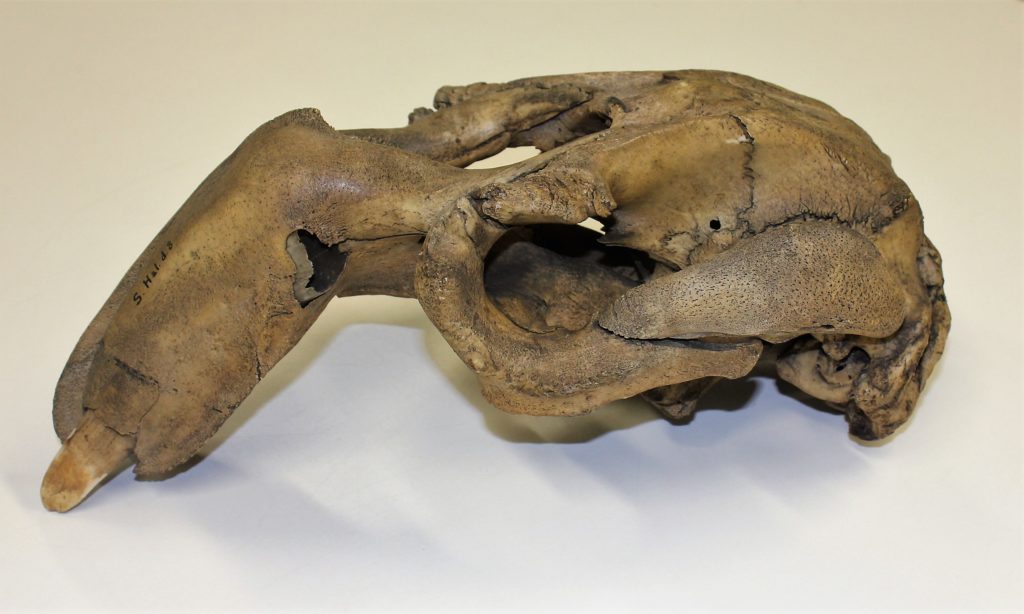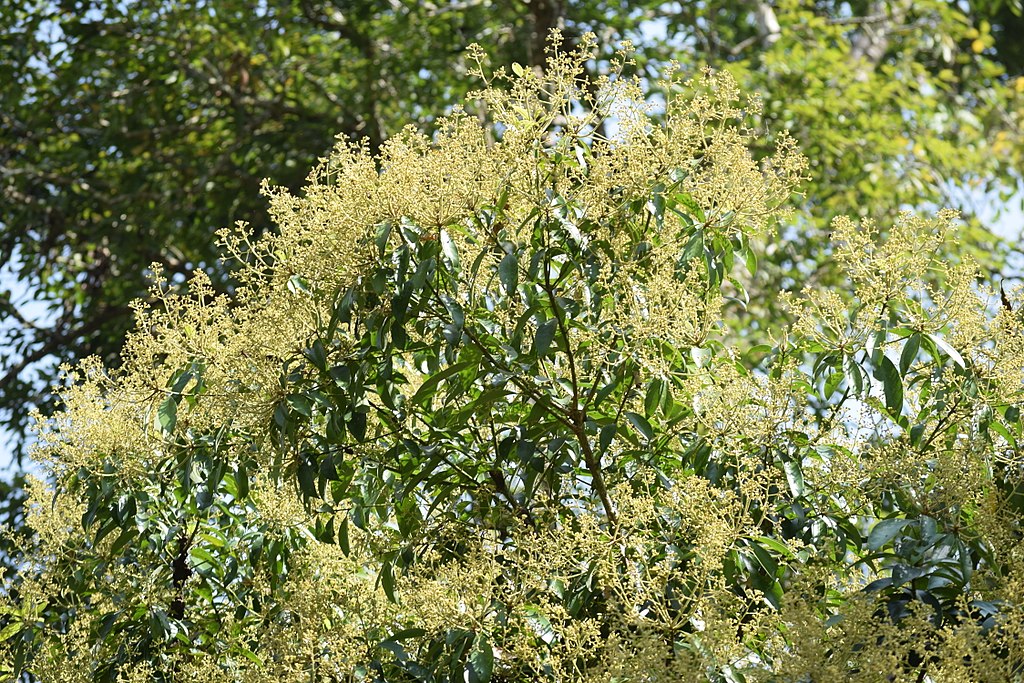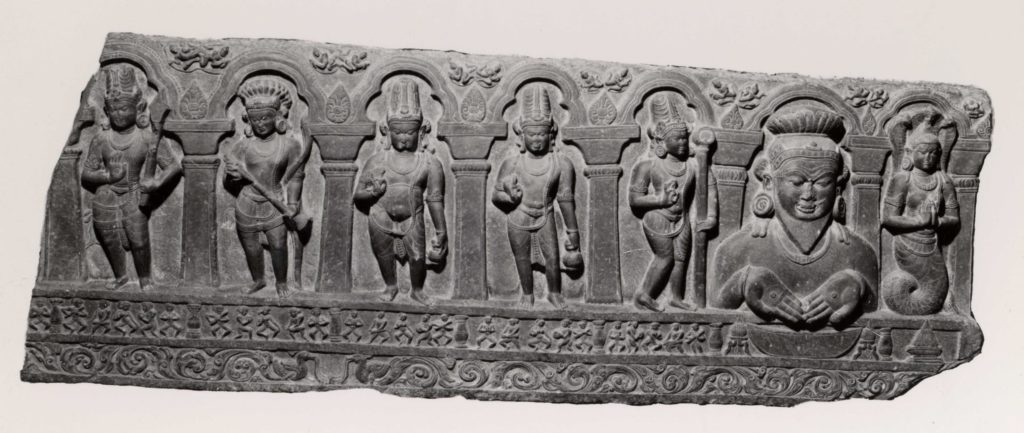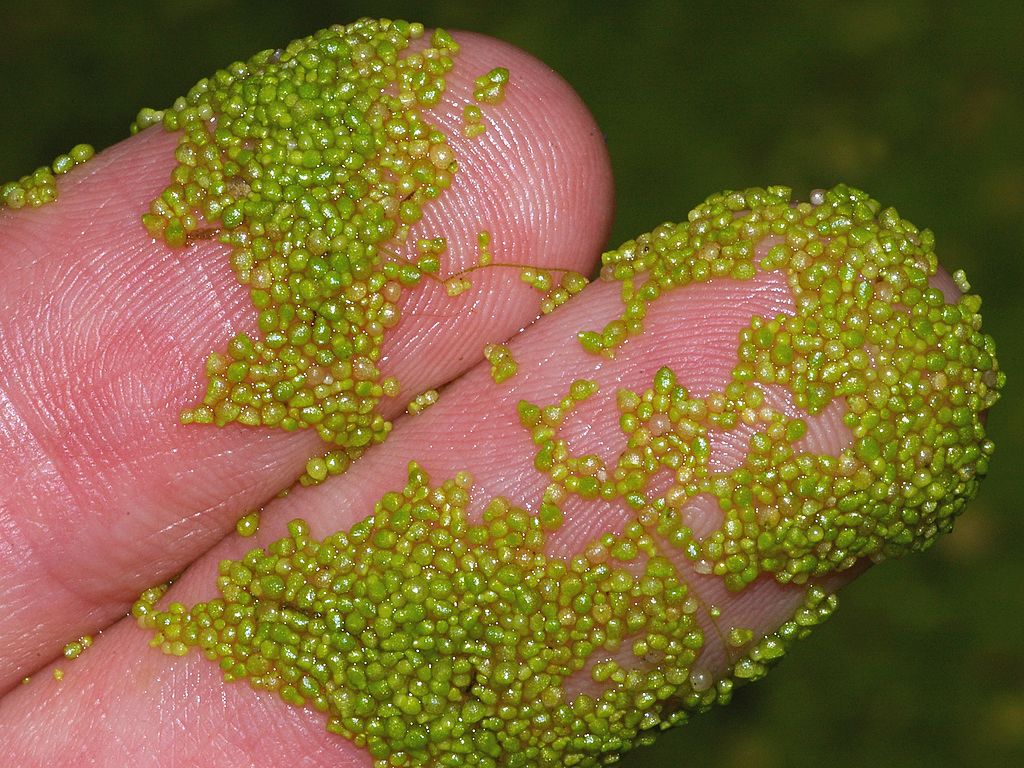In a book chapter on Indian sculpture in the collection of the National Museum of Scotland (NMS), I recently came across the names of two collectors (and indirect museum donors) of sculpture both of whom I was somewhat surprised to learn had been temporary holders of the post of Superintendent of the Calcutta Botanic Garden. Near contemporaries they turn out to have shared more than this in common – not least that both were commemorated by William Griffith (1810–1845) in the name of a genus of flowering-plant, though the difference between the genera could hardly be greater – one of the two original species of Grantia is the smallest of all angiosperms, a floating duckweed with fronds less than half a millimetre in diameter, whereas Griffith’s original species of Swintonia is a large tropical tree. Both of the botanical ‘locums’ came of Scottish gentry families – one from Lowland Berwickshire, the other from Highland Morayshire. The sculpture chapter is in a book entitled ‘India in Edinburgh, 1750s to the Present’, in which ten authors discuss interactions between the City and the Subcontinent across a wide range of fields (my own is on the RBGE Indian collections). Collectively the essays demonstrate the benefit of looking widely at records and collections held in the various institutions with which Edinburgh is so richly endowed (museums, libraries and even schools). The often labile institutional histories have been extensively interlocked, not least the relationships between the University of Edinburgh, what started its life as the Industrial Museum of Scotland (now NMS), and the Royal Botanic Garden Edinburgh.
George Swinton (1780–1854)
Swinton was born at Swinton House, near Swinton, Berwickshire, son of the advocate John Swinton, 27th of that Ilk later, as a judge, known as Lord Swinton. One of the witnesses at the boy’s baptism was his paternal uncle Archibald at that point laird of Manderston and later of Kimmerghame who, during his Oriental career had in the 1760s been a notably early collector of Indian paintings. In 1802, following his uncle’s example, George Swinton became a ‘Writer’ with the East India Company (EIC). Like his uncle he excelled at Persian and in 1814 acted as Persian Secretary to the Governor-General, Gilbert Elliot, first Earl of Minto. From 1827 until his retirement in 1833 he held the senior position as Chief Secretary of Bengal.
Between 1825 and 1830 Swinton was an outstandingly generous donor of specimens to the Royal Society of Edinburgh (RSE) of which he was elected a Fellow in May 1827. Swinton’s link with the Society, and the sponsor for his fellowship, was David Brewster. It was doubtless Swinton’s position at the centre of Government that led to the wide geographical origins of the specimens remitted to Edinburgh – not only Bengal, but Persia, Assam, Sumatra, Singapore and even Australia; Burma, however, seems to have been a special interest. Swinton went there himself during the first Burmese War in 1825, when he acquired some ‘Burmese idols’ that formed his first donation to RSE. Further sculptures and naturalia followed as a result of the 1826/7 Crawfurd Mission to Ava. Nathaniel Wallich took part in this to observe teak forests during which he made several notable botanical discoveries including the spectacular leguminous tree Amherstia nobilis, with flowers like dancing, scarlet Chinese characters and the Burmese lacquer tree Melanorrhoea (now, regrettably Gluta) usitata; it was probably during this absence of Wallich from the Calcutta Garden that Swinton acted as Officiating Superintendent. One of the places visited by Wallich was the exotic sounding ‘Fontes Petrolei’ that would later prove to be of great commercial significance (the Rangoon, later Burmah, Oil Company was founded by David Cargill in Glasgow in 1886). In 1830 Swinton sent samples of Burmese petroleum from the ‘wells’ to Edinburgh for analysis by Robert Christison, Professor of Materia Medica, who found them to contain ‘paraffine’, then newly discovered and named. Swinton also sent many zoological specimens to RSE, including snakes, birds, fish, beetles, corals, mollusca, sponges and the snout of a sword-fish.

A skull and other parts of a dugong and two hoolock gibbons were studied anatomically and published by Robert Knox. In a curious repeat of history Knox gained notoriety as the recipient of cadavers recently despatched by Burke and Hare; George’s uncle admitted to having had to leave for India on account of a youthful exploit that involved grave robbing for the Edinburgh Anatomy Department (this would have been in the time of Alexander Munro II). Eyes of elephant, deer and tiger were sent by Swinton for Brewster’s optical researches on the lenses of animal eyes. It seems unlikely that Swinton did not also send herbarium specimens to Robert Graham, but, if so, these would have been sold with Graham’s herbarium in 1845. Plant products were certainly sent to RSE, including India rubber (Ficus elastica) from Assam and sheets of shola pith (Aeschynomene aspera or A. indica). These are recorded as having been forwarded to RBGE in 1859 but must have been lost with the shameful destruction of the Garden’s Museum of Economic Botany in the 1960s.
Swinton retired to Edinburgh in 1833 to live at 4 Atholl Crescent, next door to his once-removed cousin Archibald Campbell Swinton, professor of Civil Law, and almost opposite David Brewster (by then recently knighted in the Guelphic Order) at 10 Coates Crescent.
The Griffithian nomenclature is as follows: Swintonia Griffith, Proceedings of the Linnean Society 1: 283. 1846 (Anacardiaceae)
Wallich had originally intended to name the Burmese lacquer tree for Swinton, but changed his mind and called it (for its black latex) Melanorrhoea. In his description of Melanorrhoea usitata Wallich paid tribute to ‘Mr George Swinton, chief Secretary to the Bengal Government, (to whose kindness I am indebted for much valuable information concerning the produce of this and other useful trees of India, obtained for me a supply of ripe fruits from [Manipur]’. The name was therefore still available for Griffith’s use. Twelve species are currently recognised in the genus, all occurring in SE Asia.

James William Grant of Wester Elchies (1788–1865)
Grant was born at Wester Elchies in the parish of Knockando, Morayshire. The estate had been purchased in 1783 by his father Robert Grant (1720–1803) with a fortune based on the Canadian fur trade and was inherited by Robert’s eldest son Charles who in 1812 established the village of Charleston of Aberlour now, divested of its ‘Charleston’, renowned for its whisky. At the age of 17 the younger son, James, was appointed to a Bengal Writership and in 1806 went to Calcutta where he excelled in Persian at the College of Fort William. Most of Grant’s exceptionally long career as a civil servant in Bengal was spent in the commercial sphere; at various times he was a member of the Board of Trade, the Board of Customs, Salt and Opium, and the Marine Board. From 1822 to 1832 he was based in Malda and involved with silk manufacture and it was here that he came to know the ruined city of Gaur, capital of the Bengal Sultanate in the fifteenth and sixteenth centuries, from where he acquired sculpture both Hindu and Islamic (including a mosque niche from the Small Golden Temple). (Gaur had previously been studied and depicted by Henry Creighton, a commissioner of botanical paintings from Bhawani Das, Shaik Zayn al-Din and Ram Das). Grant’s interests included painting and the study of astronomy and microscopy – according to Joachim Voigt he was ‘one of the best microscopical observers’ of his day. In 1830 Grant was joint author of report on the suitability of Darjeeling as a sanatorium, duly acted upon to become the base for Joseph Hooker’s Himalayan explorations less than two decades later. In 1834 Grant was appointed to the Bengal Government’s Tea Committee (which ran for two years) and it was probably in connection with this that he was appointed to temporary charge of the Calcutta Garden – perhaps while Wallich was on the turbulent 1835 Tea Mission to Assam with William Griffith.
Grant’s wife Margaret (née Wilson) returned to Scotland in 1830. Friederike Voigt has speculated that her husband’s collection of Indian sculpture accompanied her because by 1835 it was displayed in the garden at Wester Elchies, as described in the account of the parish of Knockando in the New Statistical Account by the Rev. George Gordon (1808–1839) (NB not the eponymous minister of Birnie). When Grant retired in 1849 (having inherited the estate on the death of his brother Charles in 1828) he continued to pursue scholarly interests and in 1851 purchased from the Great Exhibition the ‘Trophy’ Telescope (built by Charles May, with lenses by Ross) for which he built an observatory in the grounds of his mansion. In 1852 Grant gave some of his sculptures to the Elgin and Morayshire Literary and Scientific Association for their museum in Elgin – in the 1950s one of these (a carved lintel with seven, of an original nine, planets) was purchased by the British Museum and others by the Royal Scottish Museum; further pieces were acquired by NMS in 2016. Having been a preparatory school for Gordonstoun, the house and the observatory were blown up in 1970.

© The Trustees of the British Museum
The Griffithian nomenclature is as follows: Grantia Griffith in Voigt, Hortus Suburburbanus Calcuttensis 692. 1845 (Lemnaceae) = Wolffia Horkel ex Schleiden
Minute, floating aquatics, no longer regarded as distinct from Wolffia. Griffith suspected their affinity but, because he queried the synonymy of his Grantia with the earlier Wolffia, his name was not illegitimate when published. Griffith included two species – one newly described the other, described and posthumously published by William Roxburgh as Lemna globosa in 1832, was a new combination.
Grantia microscopica Griffith = Wolffia microscopica (Griffith) Kurz
Endemic to the Indian Subcontinent and rediscovered in Gujarat and Bangladesh in 2013. Its fronds are 0.4 to 1 mm in diameter.

Grantia globosa (Roxburgh) Griffith = Wolffia globosa (Roxburgh) Hartog & Plas
The smallest of all angiosperms, with fronds only 0.1 to 0.2 mm in diameter. Known as the Asian watermeal it is native to SE Asia and introduced in the Americas. In Thailand it is apparently eaten – presumably more than one frond at a time.
References
Voigt, F. (2019). Orientalist Collecting of Indian Sculpture. In India in Edinburgh, 1750s to the Present (ed. R. Jeffery), pp 47–72. New Delhi: Social Science Press.
Waterston, C.D. (1997). Collections in Context: the Museum of the Royal Society of Edinburgh and the Inception of a National Museum for Scotland. Edinburgh: National Museums of Scotland.
